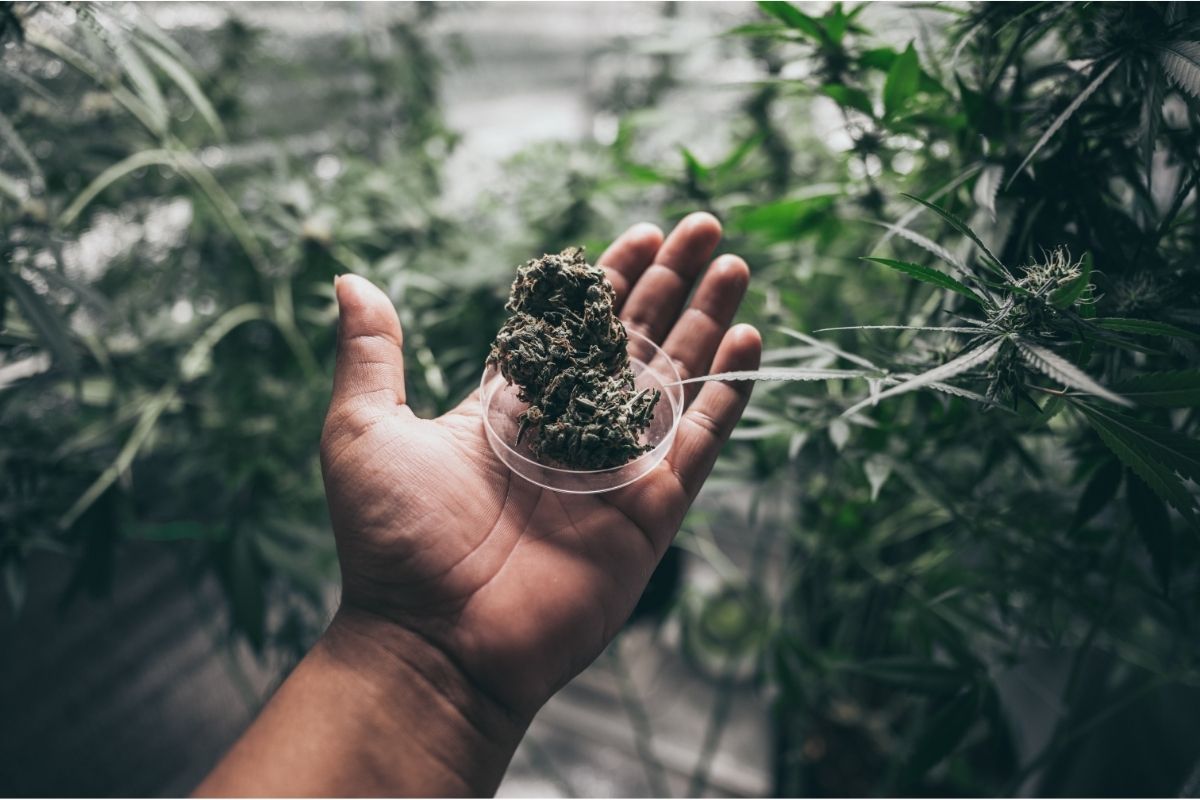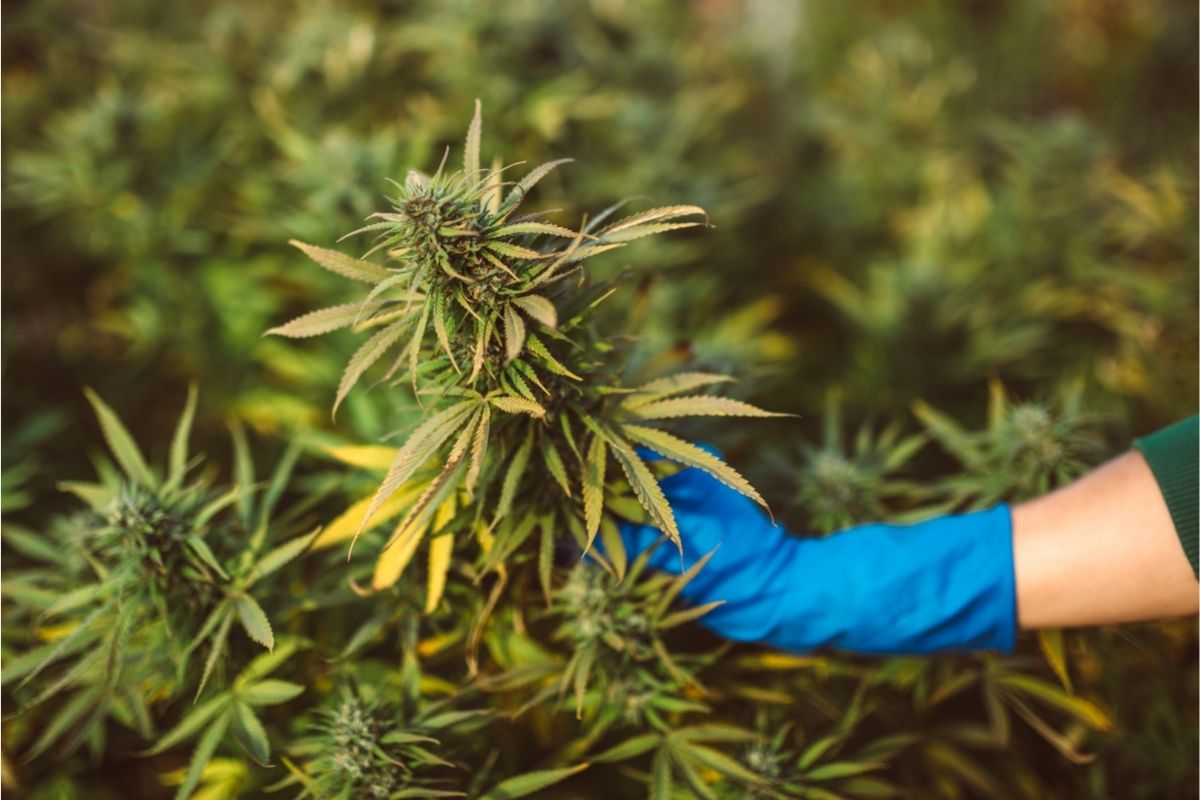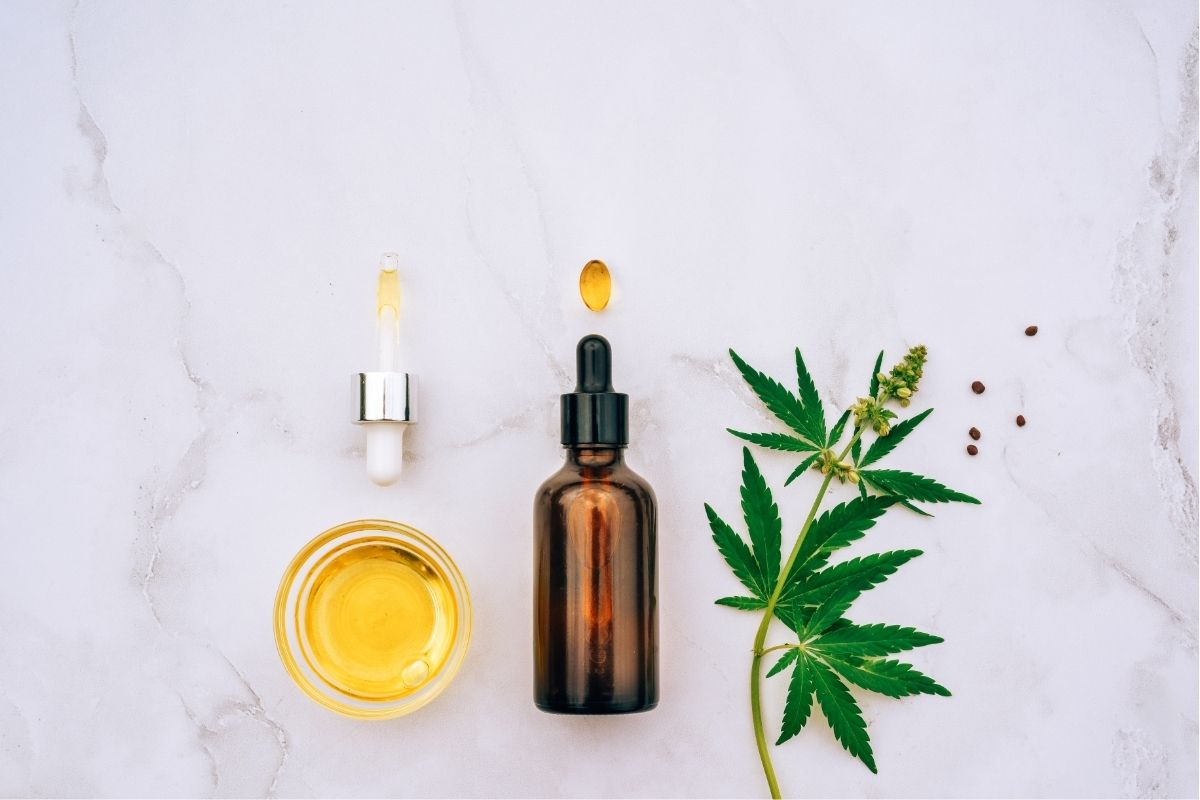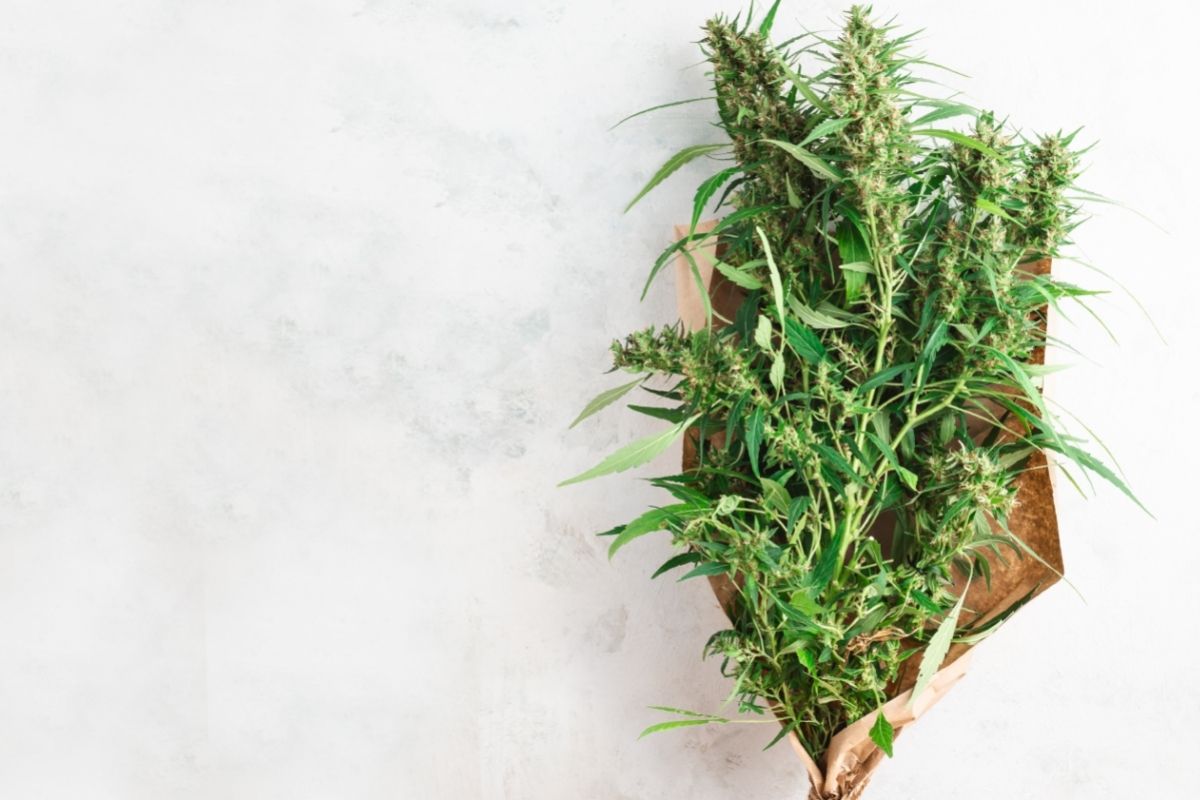There are a host of cannabinoids out there and TCHV, often called “diet weed” and “weederall”, is one that has been rising in popularity for a handful of reasons that are worth knowing about.
Alongside CBD and THC, THCV is one of the main cannabinoids that is both widely researched and widely used.

And like its cannabinoid counterparts, THVC has a variety of strains that you may or may not be interested in after discovering what THCV is all about.
This guide has everything you need to know about THCV, so you’ve arrived at the right place.
You might be completely new to THCV or someone looking to find the best THCV strains on the market.
Either way, keep reading to learn what THCV is exactly, how it differs from THC, the benefits and side effects, and whether THCV is the best cannabinoid for you.
What are THCV Strains?
Simply put, THCV strains are cannabis or hemp strains high in THCV (Delta-9 tetrahydrocannabivarin). strains are best described as “breeds” of cannabis, produced to offer different benefits, effects, tastes, scents, and more.
Depending on how it’s bred and grown, cannabis and hemp will have different levels of cannabinoids, including CBD, THC, and THCV.
There are up to 100 known cannabinoids currently researched, so they’re worth knowing about if you’re searching for specific benefits and uses.
Aside from cannabinoid content, cannabis and hemp is mass produced in strains, with some being more well-known than others.
All strains essentially come from sativa and indica cannabis —as well as hybrids of these two plants—which can be high or low in certain cannabinoids, including THCV.
Marijuana strains high in THCV are known for their energy-boosting, appetite-reducing properties. This has made THCV strains popular among various circles.
THCV vs THC
It might come as no surprise that THCV (tetrahydrocannabivarin) and THC (tetrahydrocannabinol) are similar.
The chemical makeup of the two cannabinoids is almost identical, with shared effects that include producing feelings of euphoria – which may offer pain relief and mood-changing benefits for some people.
Still, THC and THCV are far from the same.
The key difference between THC and THCV is that THCV is widely considered to have fewer of the side effects often linked to THC, including tiredness, excessive hunger, memory loss, and dizziness/loss of balance.
As a result, THCV has earned a reputation of being a “healthier” alternative to THC, as well as other cannabinoids, specifically where overeating, tiredness, and loss of concentration/balance are concerned.
These particular benefits are why THCV weed is also known as “diet weed”, as well as “weederall” the latter name referring to the effects, but not specifically the practice, of combining weed and Adderall.
The Benefits and Effects of THCV
Building on the above, what are the benefits and effects of using marijuana strains high in THCV?
As mentioned, THCV as a cannabinoid generally offers the same high as THC but without some of the unwanted side effects.
In fact, users of THCV strains claim to experience the opposite of tiredness and hunger, allowing them to enjoy the benefits of THC along with increased energy and an effectively reduced appetite for longer periods.
It goes without saying, then, that THCV strains are considered ideal for dieting as well as being able to function in any day-to-day capacity without feeling tired, dizzy, or unable to concentrate.
Users feel an adequate high that, for the most part, doesn’t restrict their ability to function.
Aside from that, however, the benefits of THCV can include
- Regulation of blood sugar levels
- Anti-inflammatory properties
- Improved motor control for sufferers of epilepsy and Parkinson’s
- Reduced nausea/dizziness and vomiting (over THC)
- Sleep stimulant (can help insomnia)
- Treating PTSD and mental disorders, such as schizophrenia and BPD
- The common therapeutic benefits of THC, including temporary pain relief and reduced feelings of depression/anxiety and stress

Popular Cannabis Strains High in THCV
If you’re no stranger to cannabis, you’ll know how many strains there are to choose from. For strains high in THCV, however, the following are the most popular THCV strains, or “diet weed” strains for reducing obesity, which you might have already come across.
As it turns out, many of the weed strains high in THCV come from sativa.
While indica plants originate from the Middle East, sativa plants can come from Africa, America, and Asia and are generally considered to offer a more “energizing” high – fitting in with the proposed effects of TCHV.
Like all marijuana strains, THCV strains are named for general marketing purposes, which may or may not have been chosen for their high THCV content.
Doug’s Varin
Depending where you find it, Doug’s Varin can have THCV content as high as 30%.
This, along with its earthy aroma, has made it arguably the most popular THCV strain, which has been claimed to boost cognitive functions in addition to reducing appetite.
Pineapple Purps
Also known as Purple Pineapple, Pineapple Purps can have THCV content anywhere between 4% and 15%.
As its name might suggest, Pineapple Purps has a sweet aroma, which many users claim enhances the high it produces, particularly beneficial for counteracting depression and anxiety.
Jack the Ripper
Popular and with several awards to its name, Jack the Ripper—also JTR—is known for its energizing properties with THCV content as high as 30%.
It’s also known for its earth-like taste that has citrusy overtones, which can be either sweet or strong depending on the user.
Pink Boost Goddess
Pink Boost Goddess is produced by Flow Kana, named for its strawberry taste and aroma that, for some people, enhances the high it provides.
Despite that, its TCHV content remains relatively low (sitting just under 5%), which can make it more ideal for users who put more importance on the benefits of THCV in general.
Durban Poison
Despite the name, Durban Poison is a hybrid strain known for its energizing high that not only alleviates tiredness overall but may increase motivation, creativity, and focus – in addition to suppressing appetite and hunger.
Typically, its THCV content is found at just under 1%.
THCV Side Effects and Risks
So, THCV strains are considered more beneficial or healthier than THC strains, simply because the common and unwanted side effects of THC—tiredness, loss of concentration/motor control, and hunger—are reduced.
Despite that, THCV, like any cannabinoid, has its side effects, which are still being researched.
THCV side effects may include but are not limited to
- Excessive or uncontrolled weight loss
- An irregular or unhealthy diet
- A THC-like high if taken in large doses
- Heart palpitations or a slowed heart rate
- Dry mouth
- Red eyes
- Anxiety (if taken as a large dose)
It’s worth noting that benefits and side effects of any cannabinoid and strain can depend on the dosage, strain, and the user themselves.
Should You Use THCV Strains?
The main benefits for opting for THCV, or strains high in THCV, are the reduced side effects of hunger, tiredness, loss of concentration, and dizziness – all common side effects of the THC cannabinoid.
So, if you prefer the high of THC but do not want said side effects that can impair your ability to function when used for certain purposes, or in general, then THCV might be an option worth considering.
Likewise, if you find being high counterproductive, or are are considered obese, THCV could be more beneficial to you.
Despite that, THCV strains can be harder to find and/or more expensive due to how they are produced.
It’s also worth knowing whether such strains are legal in your state, especially where they might be extracted from cannabis or hemp.
Conclusion
THCV, popularly known as “diet weed”, refers to strains high in THCV, which is chemically similar to THC but reported to have fewer unwanted side effects.
This includes a less pronounced high, with reduced feelings of hunger, tiredness, and loss of concentration, memory loss, and overall motor functions.
Some of the most popular THCV strains include Doug’s Varin, Pineapple Purps, Jack the Ripper, Pink Boost Goddess, and Durban Poison.
Ultimately, for those who are worried about overeating, the inability to function, or simply prefer a less potent high to THC strains, THCV strains have become popular for these main reasons and more.
If you enjoyed this post, you might enjoy our article on ‘How Good Is The Deadhead OG Strain?‘.
- Quotes From The ‘Reefer Madness’ Period That Show How Far We Have Come - May 17, 2022
- 10 Tips On How To NOT Smell Like Weed - May 17, 2022
- Tropical Punch Strain Review: Everything You Need To Know - May 17, 2022








